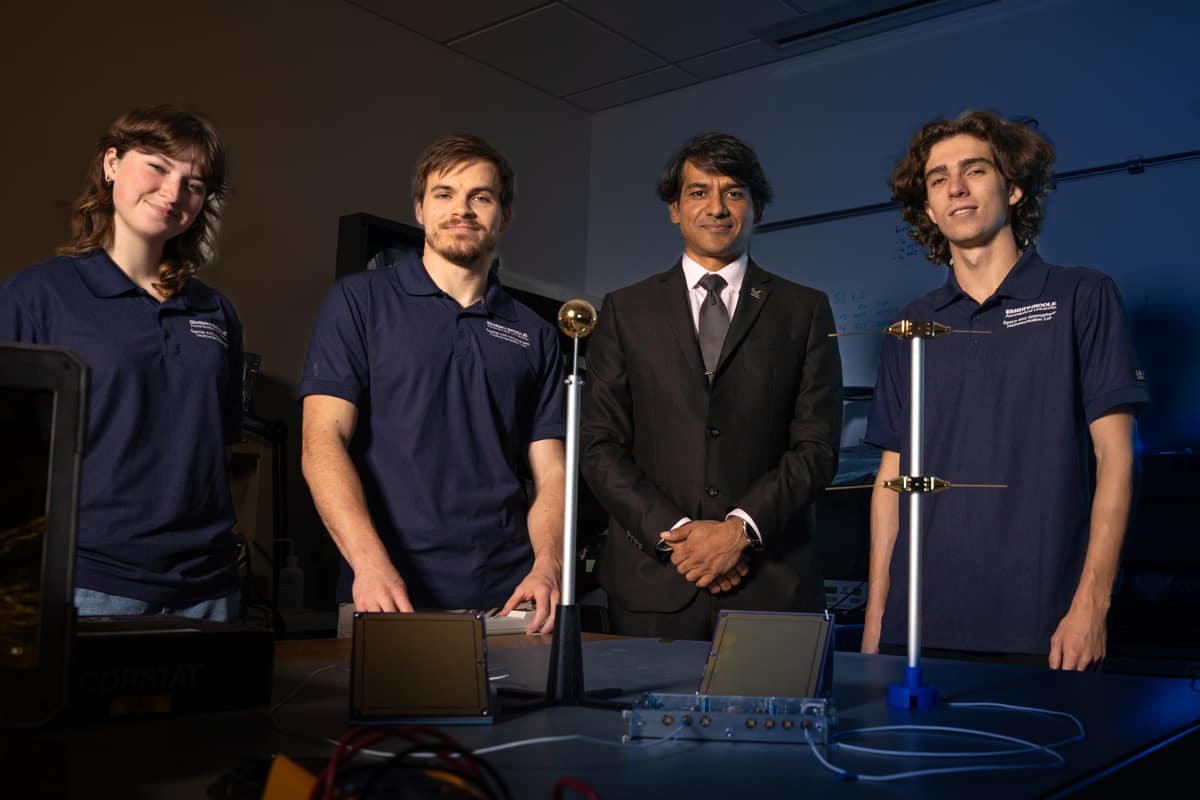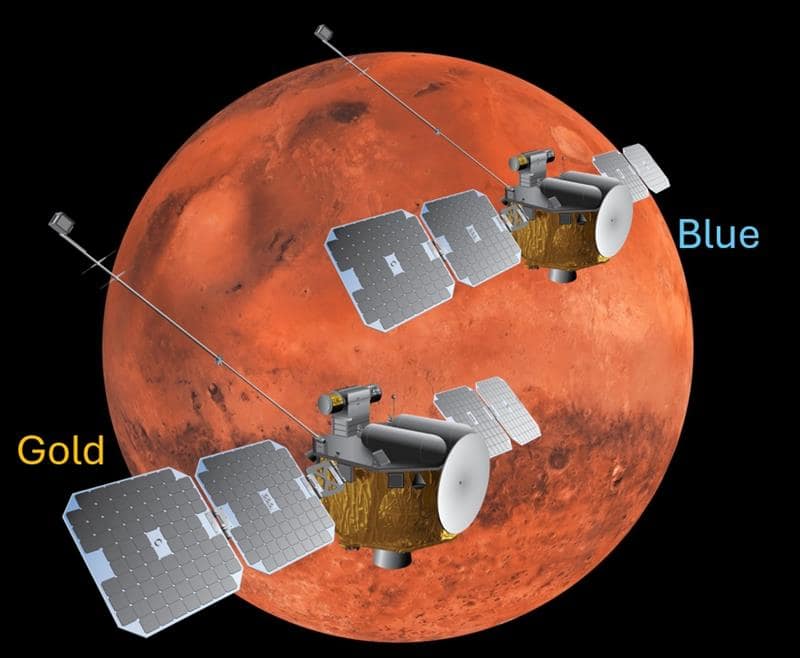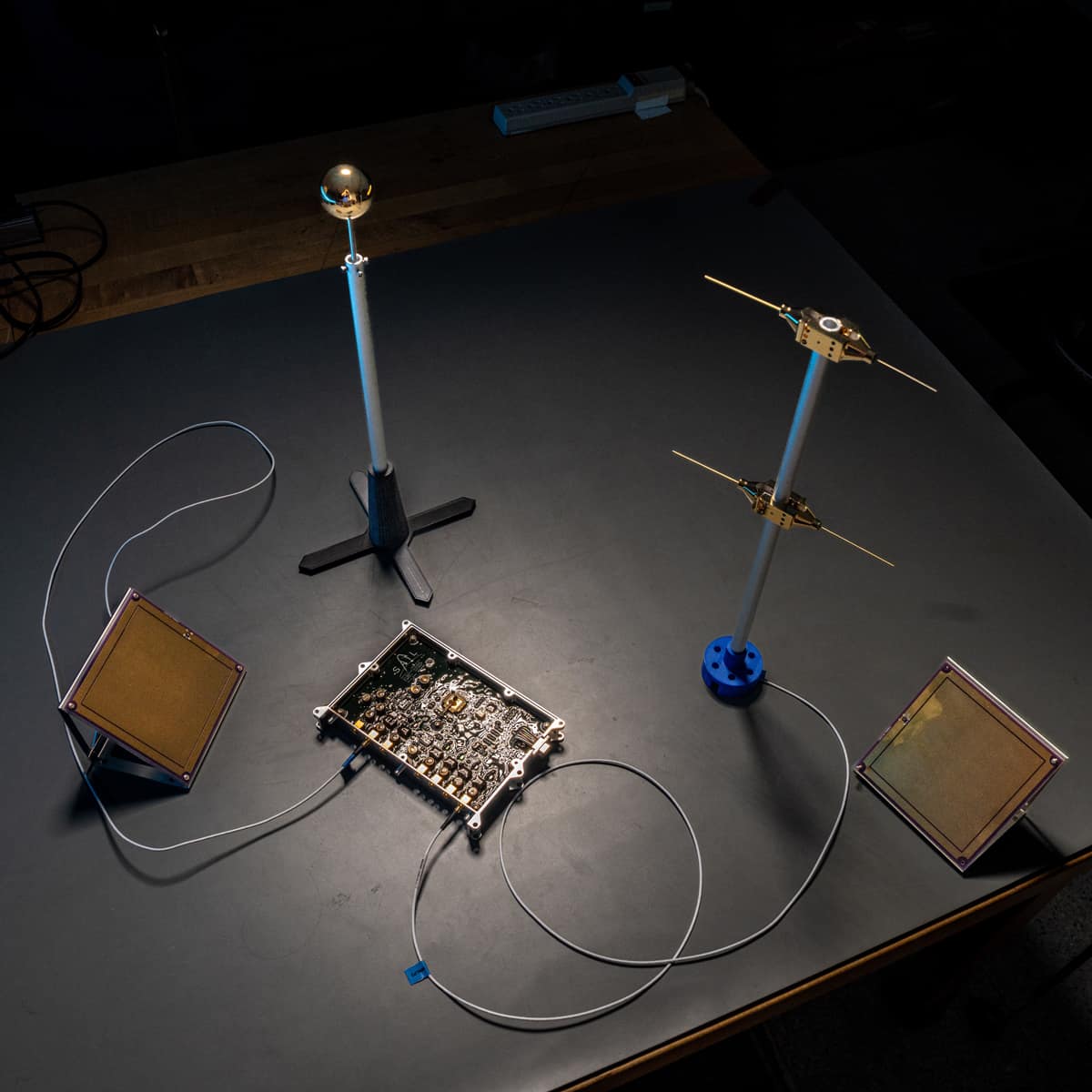Instruments Built by Embry-Riddle Ready for Liftoff on NASA’s ESCAPADE Mars Mission

When the ESCAPADE mission blasts off toward Mars, instruments designed and built by Embry-Riddle Aeronautical University students will be on board — ready to probe the red planet’s atmosphere and uncover how solar storms and space weather impact it, thus helping to unravel Mars’ planetary evolution history and possibly paving the way for the first human explorers.
The NASA Heliophysics ESCAPADE mission, which will send twin spacecraft to orbit Mars, is scheduled to launch no earlier than November. The mission rocket is currently positioned at Cape Canaveral Space Force Station.

Rendering of the ESCAPADE spacecraft around Mars. (Image: Embry-Riddle/Aroh Barjatya)“Students working in the Space and Atmospheric Instrumentation Lab have now built dozens of instruments for rockets and satellites to study Earth’s space weather. Launching these instruments to study space weather at another planet accelerates the team’s hands-on learning to a cosmic scale,” said Dr. Aroh Barjatya, professor in the Department of Physical Sciences, associate dean for research and graduate studies in the College of Arts and Sciences, and a co-investigator on the ESCAPADE mission.
The twin satellites will make simultaneous measurements of the plasma that forms the Martian atmosphere and “will definitively map out” the processes that drive the planet’s atmospheric escape. That phenomenon has played a crucial part in the transformation of Mars “from a planet where there was once liquid water to the cold, arid planet of today,” said Barjatya, who is also the director of the Space and Atmospheric Instrumentation Lab, and the interim executive director of the Center for Space and Atmospheric Research.
The instruments developed at Embry-Riddle, called the ESCAPADE Langmuir Probe suite, will contribute to measuring a variety of plasma properties, said Ph.D. candidate Nathan Graves.
“Together with the other experiments on board the two spacecraft, the science community will get a great understanding of the plasma environment around Mars,” Graves said.
Ian Holland, a senior in Engineering Physics, will process the data from the instruments, relayed through deep space communication, starting a few days after launch. Data from Mars will not be available until 2027, however, when the orbiters arrive there.

Langmuir probes will be aboard NASA's ESCAPADE mission to Mars to probe the planet’s atmosphere and uncover how solar storms and space weather impact it. A circuit board built by the students that will travel to Mars is etched with their names. (Photo: Embry-Riddle/Bill Fredette-Huffman)Holland said he views his work on the ESCAPADE mission “as the beginning of my career in research.”
Barjatya said his Space and Atmospheric Instrumentation Lab is a leader in making the kind of instrumentation they have provided for ESCAPADE. He and his researchers have launched similar Langmuir probes aboard sounding rocket missions, including during 2023 and 2024 eclipses, and in CubeSat constellations in Low Earth Orbit.
“It was a natural progression to go from Earth orbit to Mars orbit,” Barjatya said, adding that the instruments headed to Mars had to be tested and modified to withstand the high levels of radiation they will encounter during the mission.
The twin orbiters, which are each about the size of a standard refrigerator, will be sent to the red planet aboard Blue Origin’s New Glenn. The launch is the second ever for the New Glenn rocket.
ESCAPADE is being led by the Space Sciences Laboratory at the University of California, Berkeley. In addition to Embry-Riddle, key partners include Rocket Lab, NASA’s Goddard Space Flight Center, Advanced Space LLC, Blue Origin, and Northern Arizona University.
“The cutting-edge contributions of our institution's researchers aboard the ESCAPADE mission clearly demonstrate the high-impact work that Dr. Aroh Barjatya and talented students — the next generation of aerospace leaders — are capable of delivering,” said Dr. Jeremy Ernst, vice president for research and doctoral programs at Embry-Riddle.

 Michaela Jarvis
Michaela Jarvis